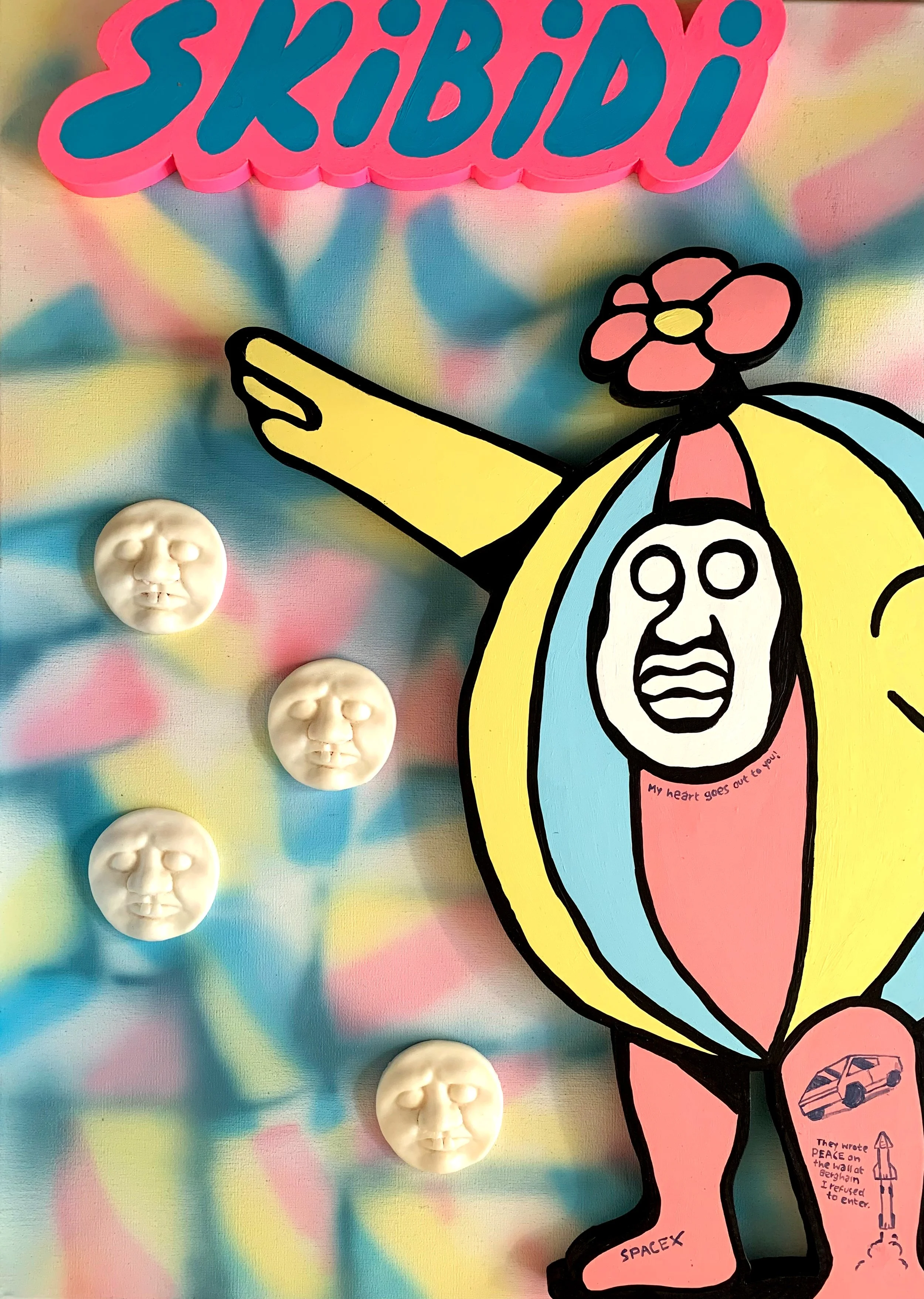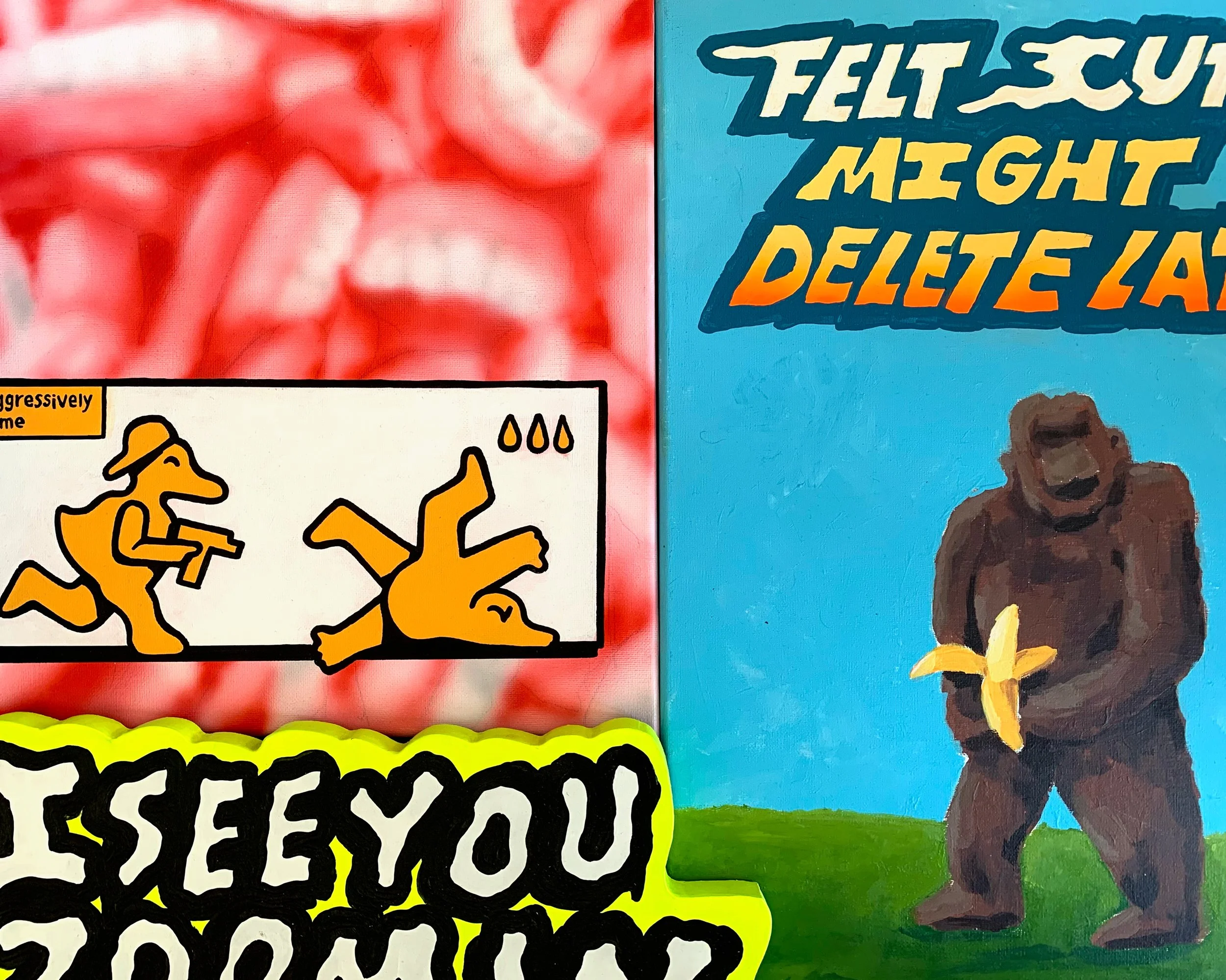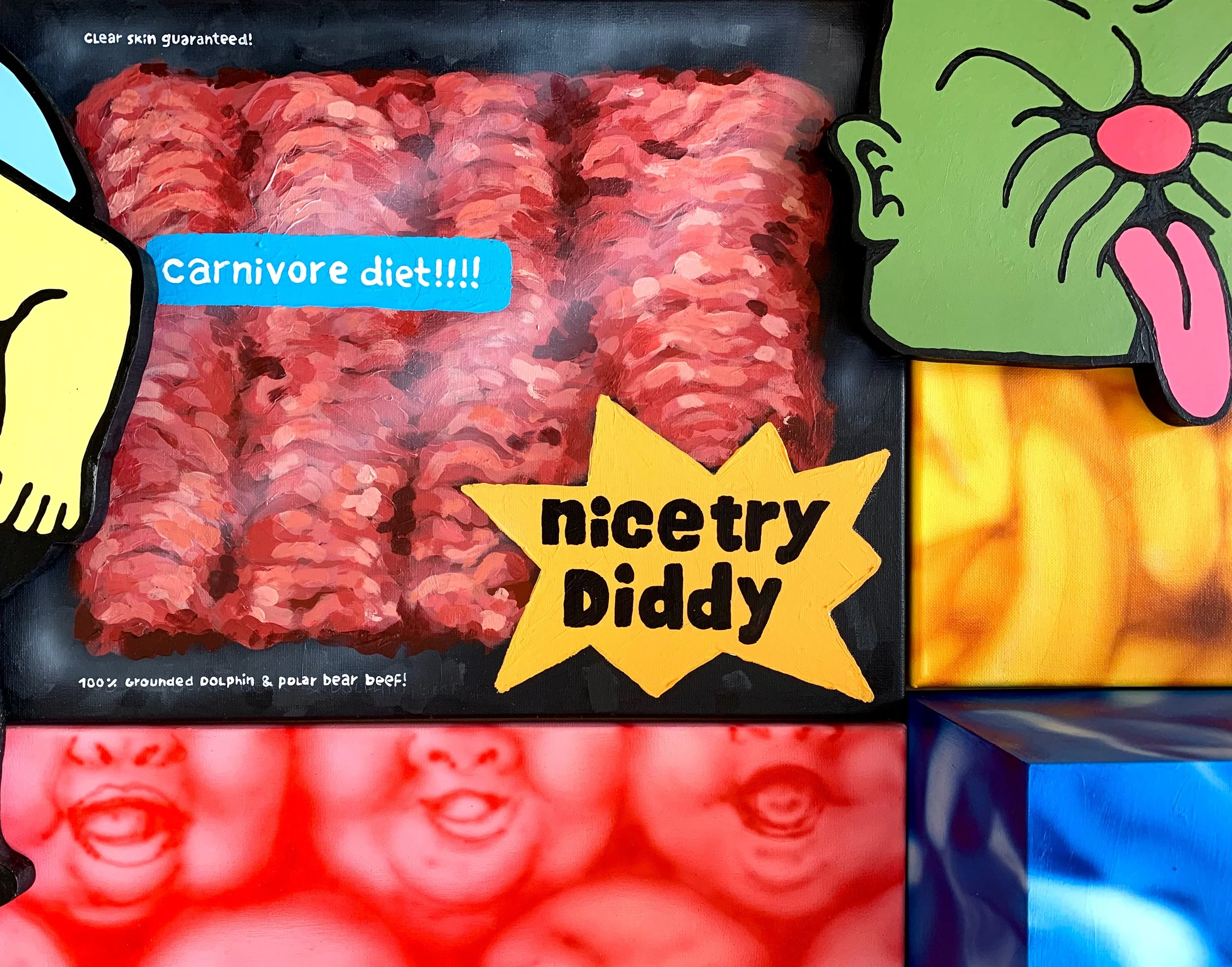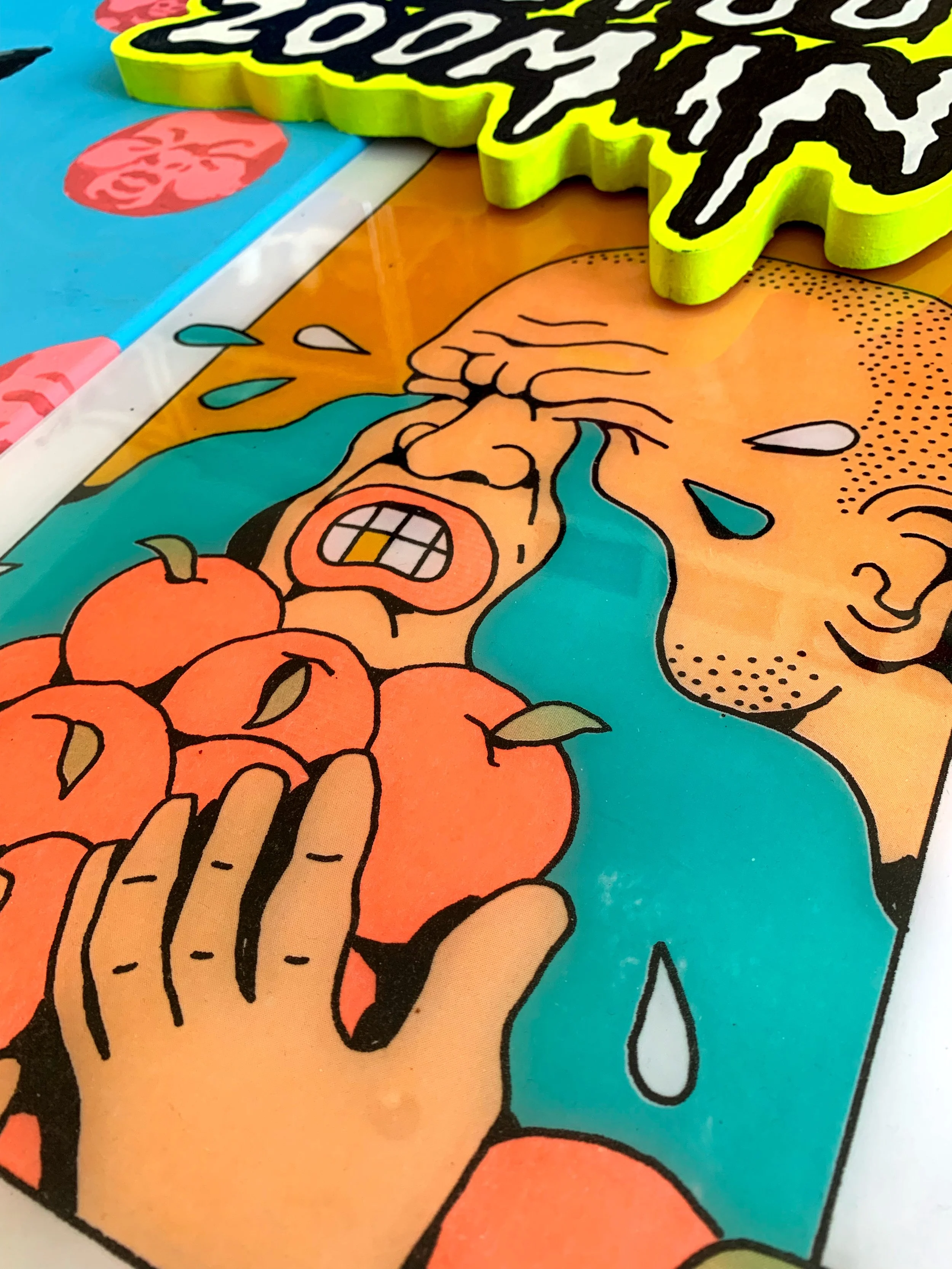ANTISOCIALDOLPHINMILK
An analogue installation that explores the ambiguous, addictive world of social media. Its candy-like aesthetic seduces, while themes such as sexism, sadism, disinformation and social pressure simmer beneath the surface. With this installation, I question our relationship with scrolling, desire, and (mis)information. What is real, and do we actually have any control over what we see online?
For a year, I immersed myself in the most viral — but also darkest — corners of the internet. My algorithm grew more extreme, more visual, and more intense by the day. I encountered images and stories I never asked for — some I wish I had never seen.
Research shows that constant exposure to short, powerful stimuli — like scrolling through images and memes — overstimulates the brain’s reward system. This creates a dopamine addiction, difficulty focusing, and a distorted sense of reality: the phenomenon often referred to online as “brainrot.” Addiction and seduction are also key reasons why much of the work is inspired by candy. Think of how we used to stand in the candy store as children — only back then, our allowance still limited us. Now, we have endless free content, always and everywhere. Food trends, pseudo-doctors and covert advertisements are another fascinating, toxic and widespread phenomenon.
Memes, viral content, fetish accounts and comment sections show that our behavior online differs radically from real life. As the project progressed, I began to incorporate more text from the internet to expose the superficial, fast, colorful and humorous content — which often masks a much darker, morally ambiguous underlayer. In that layer, values, norms, and even truth seem to barely matter anymore.
Because of the intense social behavior reflected in this context, dolphins play a recurring role: we often find them ‘cute’, but their lives are socially hyper-intense and sexually extreme. Animals in general play a key role in both my project and in social media — after all, how could a cute cat video not go viral? How seriously should we be taking all of this? What algorithm are you trapped in? And how responsible are we, really, for what we end up seeing online?






